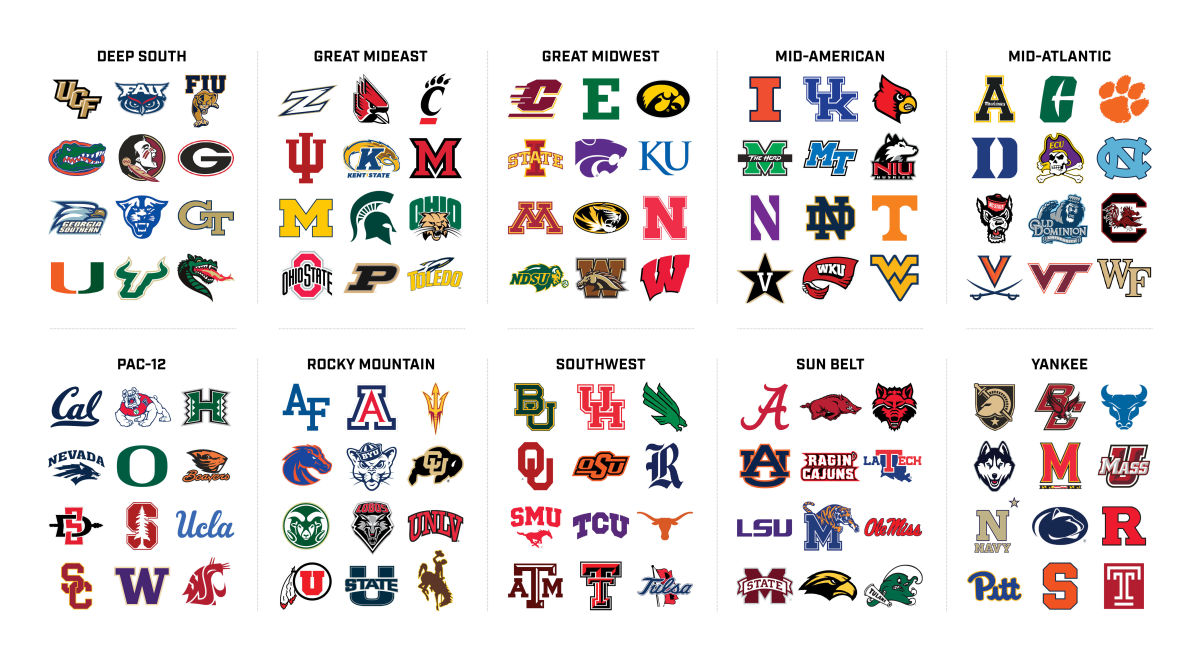Utah joining the Rocky Mountain conference in new re-alignment
A decade ago, the college sports landscape underwent a significant makeover — and with that saw Utah leave the land of the non-Power 5 conference and make it to the big time.
But with the sports world ever-changing, Sports Illustrated writer Pat Forde thinks it's time for a change — and because we could all use something to talk about while the COVID-19 pandemic continues to wreak havoc on us all.
Forde took on the ever-difficult task of realigning the entire college football landscape, citing current geographical complications as his primary reason for doing so. Also, the current landscape isn't necessarily a competitive one for all schools — although doing so would be nearly impossible.
“If only this could be pitched to centralized leadership of college football that was interested in the good of the entire enterprise. But that doesn’t exist, and that’s another column for another day,” Forde wrote. “What college football would gain from this realignment: uniformity; conference championships that truly matter; increased access to a more lucrative playoff; a more level playing field for the little guys; renewed regional identity; cherished rivalries preserved, restored—and, in some cases, forced into permanent existence. The advantages are abundant.”
Before we delve into how this changes this for Utah, and ignites old school rivalries, here are a few things about the bigger picture.
- The new proposed landscape would consist of 120 teams across 10 newly formed conferences.
- Big props go to North Dakota State, who is the only FCS team chosen to join the big boys. Condolences go out to UTEP, Texas State, UTSA, South Alabama, Louisiana-Monroe, Bowling Green, New Mexico State, San Jose State, Coastal Carolina, Troy and Liberty, all of whom will drop down to the FCS. (Reevaluation will be revisited every three years)
- Each conference has been thought up with the intention to maximize proximity between schools, likewise reducing the amount of travel costs and demands on one another.
- Within each new conference, there are between 4-8 programs from previous Power 5 conferences. There are also no independents, with BYU and Notre Dame joining conferences.
- Each team will play a 12-game regular-season schedule, 11 against all conference teams and one non-conference game (no FCS opponents). The nonconference opponents will be decided a minimum of four years in advance before there is an opt-out to reschedule.
- There will NO conference championship games.
- One of the biggest positives is that, while there still will be a bowl season, there will be way fewer bowl games.

With all of that being said, Utah will now join the Rocky Mountain conference, along with former Pac-12 foes Arizona, Arizona State and Colorado. The conference looks very similar to the old Western Athletic Conference and Mountain West Conference — almost like a futuristic combination of them.
The new look Rocky Mountain conference will consist of...
- Air Force
- Arizona
- Arizona State
- Boise State
- BYU
- Colorado
- Colorado State
- New Mexico
- UNLV
- Utah
- Utah State
- Wyoming
Altogether, the 10 new conferences are: Deep South, Great Mideast, Great Midwest, Mid-American, Mid-Atlantic, Pac-12, Rocky Mountain, Southwest, Sun Belt and Yankee.
The new Pac-12 conference would keep mainstays Cal, Oregon, Oregon State, Stanford, UCLA, USC, Washington and Washington State, while bringing in Fresno State, Hawaii, Nevada and San Diego State.
While this scenario is highly unlikely, almost to the point of certainly not happening, it's wise to consider "never say never."
Want to share opinions or ask questions? We want to hear them! Making a profile is free and it only takes ~1 minute to set up. Also, be sure to like us on social media for future coverage:
Twitter — @UtahUtes_SI and Ryan Kostecka at @Ryan_Kostecka
